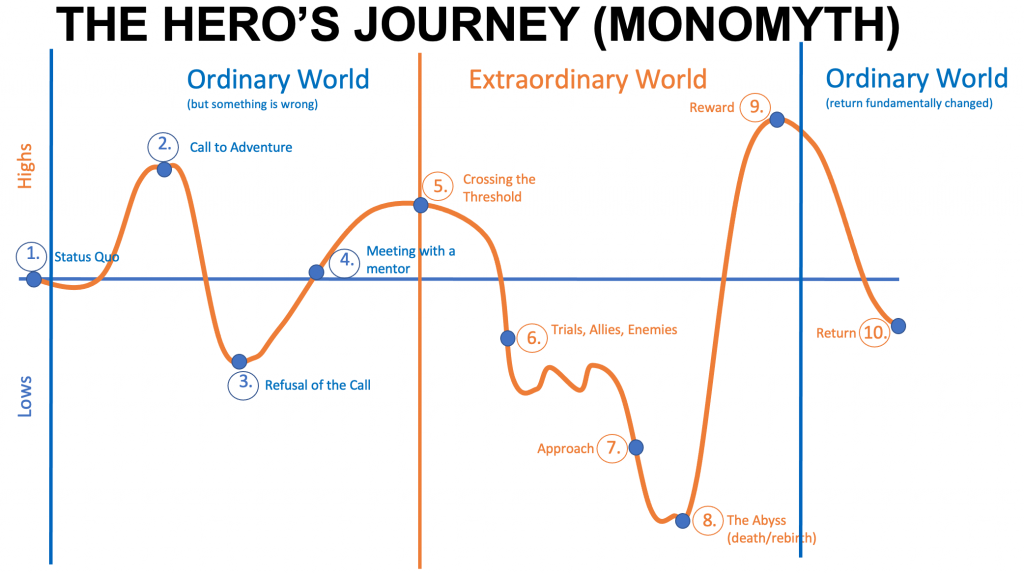Preparing a VC pitch deck can be a demanding job. Imagine that you have a wonderful idea, and you want to sell it to that stranger sitting at the opposite of the table, who has probably seen similar kinds of ideas thousands of times. How could you ensure your presentation beat everyone else’s? The key is to keep the VC attentive during your whole presentation. But how would you do that? There is one simple solution: tell a story. You want to take your audience on a trek through a story flow, which allows them to see the gem that sparks beneath the water.
According to Jerome Bruner, a cognitive psychologist, we are 22 times more likely to remember a fact when it is presented in the form of a story, as stories are more memorable than hard cold numbers and facts. After a VC pitch, it is unlikely that the audience would recall any numbers you mentioned during the pitch. What sticks with them are the stories that bring data and facts to life.
For this article, we will look at how we can utilize storytelling to bring your VC pitch to the next level.
1. The story you want to tell
So, you want to include storytelling in your VC pitch. How hard could that be? Everyone has the capability of telling a story, as this is something that we do every day. In some sense, we are all experienced storytellers: we’ve all complained about the school to our parents; we’ve all bragged about our achievements in a bar to our friends; we’ve all confessed to our loved one’s starting with “I remember the first moment I looked at you…”
Stories are the channels we use to deliver our thoughts and
emotion to the audience effectively. In order to reach our goals, we usually
change our storytelling styles accordingly. When presenting to a venture
capitalist, there are two goals we want to accomplish:
·
We want to show the VC that there is a problem
out there. We want to indicate that our product is the ultimate solution to that problem. Instead of filling your pitch deck with mountains of numbers and facts, we suggest infusing the narrative structure below into your VC pitch.
We will be roughly following the path of the Hero’s Journey, a tried and true storytelling formula that many of your favorite movies follow! (and once you learn it, you’ll never not be able to see it again)

With the help of this framework, we seek to present a story about a hero went on a journey for saving the realm from the calamity.
2. Exposition: Present the Conflict at the Front
Our hero lived a peaceful life until one day; he found a calamity was on its way to disrupt his life entirely. To find the solution, our hero took off on his adventure.
The exposition stage is how all stories get started: it’s about setting up the world filled with love and peace until the inciting incident occurred and changed the course of everything. When presenting to a VC, it is critical to grab interest right away in the first few minutes. Nothing is more effective in attracting the audience’s attention than introducing a conflict since it would urge the investors to get curious and excited about how this conflict will eventually be resolved. This conflict can be about a long-existing problem/opportunity that no one else has stumbled upon.
Another critical point is that when pitching your idea, don’t position yourself as the hero of the story; make the user of your product the protagonist. So, when you are constructing your story, it is crucial to do research ahead of time. By setting our hero, the customers enable us to truly connect with the investors, as they will be able to walk in the shoes of the character and understand the value of the product you are proposing.
3. Rising Action: Build the Momentum
A heroic story usually builds over time. A good storyteller would not allow our protagonist to find the solution right outside of the village that he just took off. The way to success is filled with obstacles and perils, and we would make our protagonist confront the difficulties head-on. When pitching to the investors, this stage is about demonstrating alternative options in the market that doesn’t work. We intentionally mention these frictions in the story in order to build the momentum that eventually leads to the destination, which is our solution. The rising action stage also provides an opportunity for the startup to demonstrate how they are differentiated from the competitors in the market.
4. Crisis + Climax: Where the Support Hands Enter the Scene
After months of traveling, our hero eventually made it to the final battleground, yet the most dangerous crisis is still waiting ahead…
As the story has progressed to this moment of crisis, it’s at the point of no return. In the case of the pitch, it is at the point when we reached our final solution, yet we don’t have the resources/capital to bring our solution to life. In order to overcome this unprecedented challenge, we would have to turn to the investors for help. By following along this whole journey, we would hope that the investors can empathize with our hero and provide the support hands that can help us through the quagmire.
5. Resolution: The Fin
The journey finally comes to an end. The calamity is solved, and the hero went back to the original village with glory and fulfillment.
We can now relate this to then end of story in you pitch, where the problem has been solved, and your solution can be credited its success.
STAR Storytelling
Now, let’s dive into the STAR storytelling method because if you aren’t using this in your pitch, you should be! STAR storytelling, created by Development Dimensions International, stands for Situation, Task, Action, and Result, and it’s a game-changer for telling your story effectively. Here’s how it works: first, you set the scene with the Situation you were in. Then, you describe the Task or goal you were faced with. Next, you outline the Actions you took to tackle the task. Finally, you reveal the Result of your actions, highlighting your achievements and the impact you made. It’s a simple yet powerful way to structure your narrative and make a lasting impression.
Conclusion
In conclusion, storytelling is a powerful tool that can elevate your VC pitch to new heights. By crafting a narrative that captures the attention of your audience and engages them emotionally, you can make your pitch more memorable and compelling. Remember to start with a strong conflict or problem, demonstrate how your product or idea is the ultimate solution, and build momentum towards a satisfying resolution. By infusing storytelling into your pitch, you can not only convey information but also create a connection with your audience that will leave a lasting impression. So, the next time you’re preparing to pitch to investors, consider incorporating storytelling into your strategy.
Looking for more tips and insights to take your business to the next level? Cre8tive Capital is at your service! Follow us on our social media channels to stay in tuned for our newest blog posts and events! Visit our Contact Us page to sign up for our 30-min free business consultation session!
